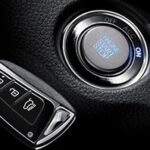Buying a new car involves numerous considerations, and safety is paramount for most consumers. One of the most recognizable indicators of vehicle safety in the United States is the 5-Star Safety Ratings Program. This system provides a straightforward way to understand and compare the safety performance of new vehicles. But what exactly does a 5-star rating mean, and how is it determined?
The 5-Star Overall Vehicle Score is designed to summarize the crash protection of a vehicle. It’s presented as a star rating, making it easy to quickly assess the relative safety risk. This overall score isn’t a direct average of individual test scores but rather a calculated assessment based on the probabilities of injury in different types of crashes. These probabilities are derived from frontal and side crash test ratings and a projected probability of injury in rollover accidents.
The calculation process is weighted to reflect the real-world frequency and severity of different crash types. This means that the ratings prioritize protection in the most common and dangerous accident scenarios. After calculating the overall injury risk for a specific vehicle, it is compared to the average injury risk across all vehicles in the current fleet. This comparison determines the star rating, indicating whether a vehicle offers more or less protection than average.
Here’s a breakdown of what each star level signifies in terms of overall injury risk compared to the average vehicle:
- ⭐⭐⭐⭐⭐: Overall injury risk is much less than average. This represents the highest level of safety, indicating superior crash protection.
- ⭐⭐⭐⭐: Overall injury risk is less than average to average. These vehicles provide good safety performance, better than or equal to the typical level of protection.
- ⭐⭐⭐: Overall injury risk is average to greater than average. This rating suggests a vehicle offers average protection, potentially with some areas of higher risk compared to the safest vehicles.
- ⭐⭐: Overall injury risk is greater than average. Vehicles with this rating present a higher risk of injury in a crash compared to the average.
- ⭐: Overall injury risk is much greater than average. This is the lowest safety rating, indicating a significantly higher risk of injury in the event of a crash.
It’s crucial to understand the limitations when comparing these star ratings. A vehicle’s Overall Vehicle Score is partly based on its frontal crash test rating. Therefore, comparisons are only valid between vehicles within the same class and with a weight difference of no more than 250 pounds. This weight and class restriction is essential for meaningful comparisons because crash forces and vehicle compatibility vary significantly across different vehicle types and weights.
To illustrate the correct and incorrect ways to compare vehicle safety ratings, consider these examples:
- Incorrect Comparison: Comparing a 4,500-pound SUV to a 3,000-pound sedan is not appropriate. These vehicles are in different classes and exceed the 250-pound weight difference limit. Their safety ratings are not directly comparable.
- Incorrect Comparison: Comparing a 3,600-pound pickup truck to a 3,400-pound minivan is also invalid. While they meet the weight requirement, they belong to different vehicle classes (pickup vs. van), making a direct safety rating comparison misleading.
- Correct Comparison: It is valid to compare a 3,400-pound passenger car to a 3,650-pound passenger car. They are in the same class (passenger cars) and the weight difference is within the 250-pound limit. Their 5-star safety ratings can be meaningfully compared.
In conclusion, the 5-Star Car Safety Ratings Program is a valuable tool for consumers looking to make informed decisions about vehicle safety. It provides an overall assessment of crash protection through a simple star rating system. However, it’s vital to compare ratings only between vehicles in similar classes and weight ranges to ensure accurate and relevant safety comparisons. Understanding these guidelines allows car buyers to effectively use the 5-star ratings to prioritize safety when choosing their next vehicle.
